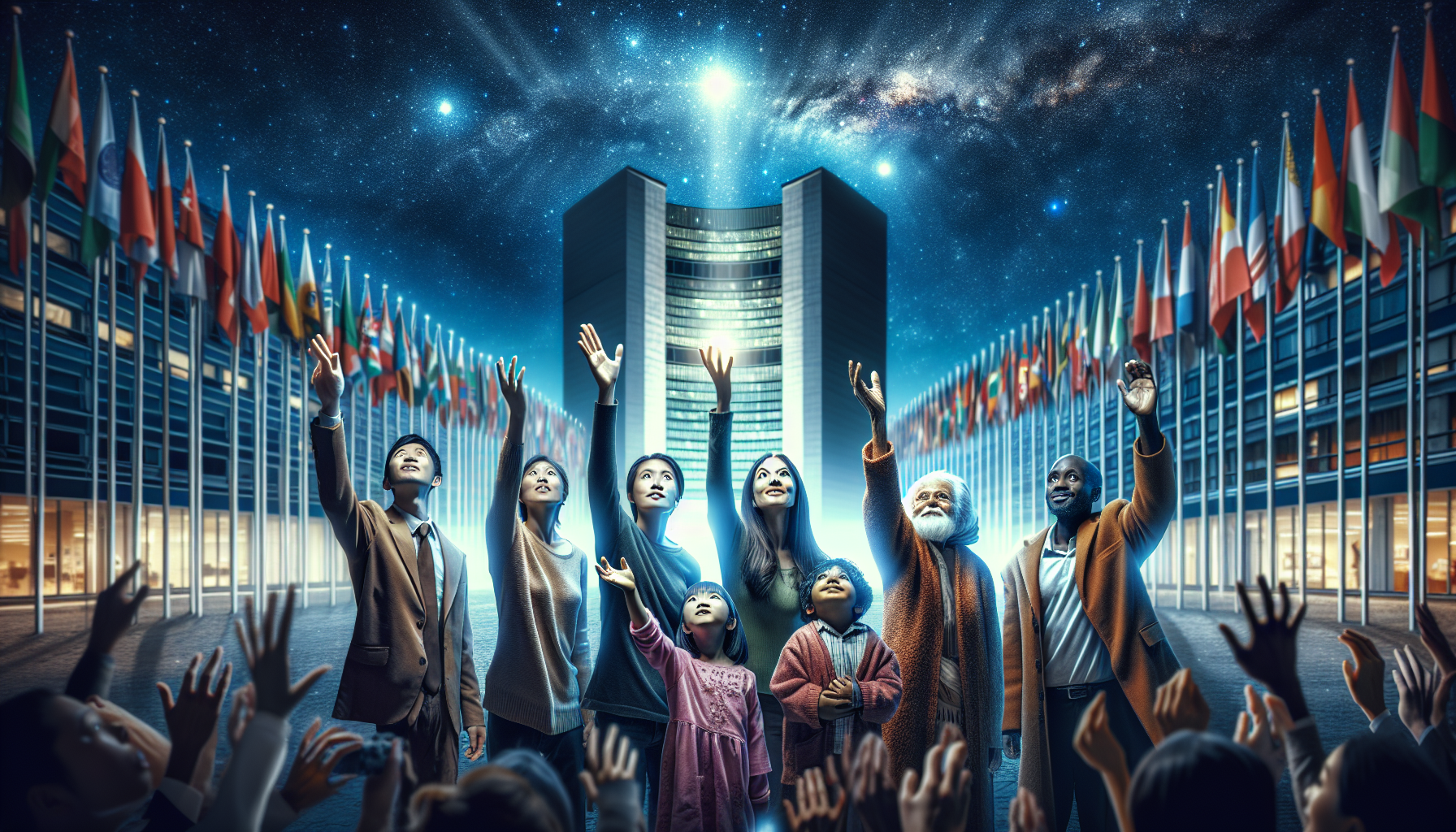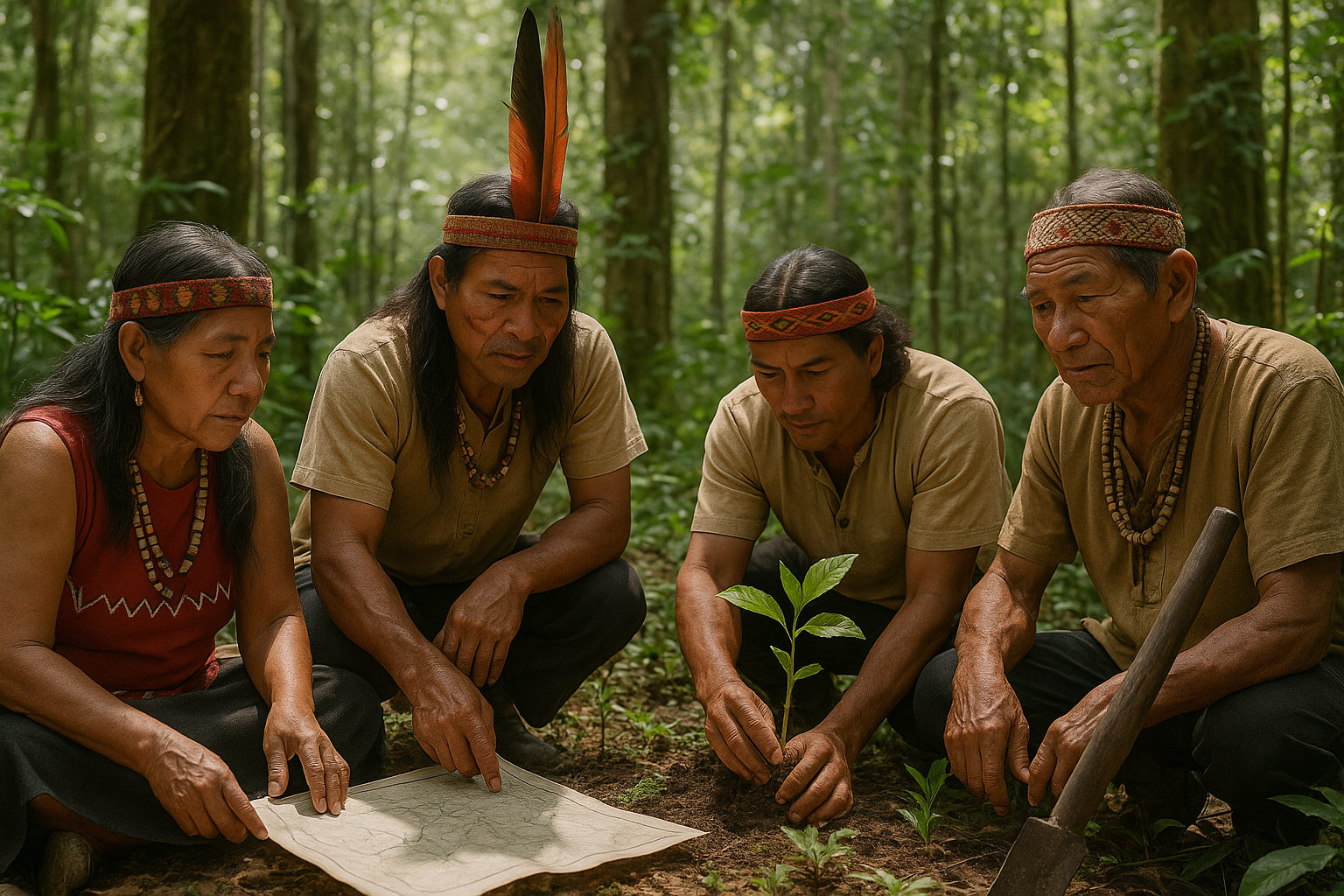In a world where boundaries are constantly being redefined and the map of international relations is as dynamic as ever, the quest for United Nations recognition stands as a beacon of hope and legitimacy for many entities and regions. 🌍 Yet, the journey to this coveted recognition is fraught with challenges, political intricacies, and diplomatic nuances that can make it seem like reaching for the stars. As we delve into the complex tapestry of international diplomacy, it becomes evident that the path to UN recognition is not merely a bureaucratic hurdle, but a profound statement of identity, sovereignty, and the universal quest for acknowledgment on the global stage.
This exploration into the labyrinthine corridors of international politics will unravel the stories of those who strive for a seat at the world’s most influential table. We will navigate through historical precedents, examining cases where entities have succeeded against all odds, and others where the dream of recognition remains elusive. From the intricacies of statehood criteria to the pivotal role of geopolitical interests, our journey will shed light on the factors that can tip the balance in favor of or against recognition. As we dissect these elements, we will also consider the impact of non-recognition on the people and regions involved, highlighting the human dimension behind the political maneuvers.
Moreover, this article will contemplate the evolving nature of nationhood and what it means in today’s interconnected world. Are the traditional criteria for statehood still relevant, or are we witnessing a shift towards new paradigms of recognition? 🤔 By engaging with experts in international law, diplomats, and political analysts, we aim to provide a comprehensive overview of the landscape of UN recognition. Ultimately, this journey through the highs and lows of diplomatic quests seeks to inspire a deeper understanding of the importance of recognition in the international community and to ponder whether the dream of reaching the stars can indeed become a tangible reality for those who dare to dream.
The Quest for UN Recognition: Historical Context and Challenges
The journey towards achieving United Nations recognition is fraught with complexity, deeply intertwined with the intricate fabric of international politics and historical precedents. This pursuit often encapsulates aspirations of self-determination, legitimacy on the world stage, and the tangible benefits that come with being part of the global governance framework. Historically, the recognition by the UN has been a pivotal milestone for regions and entities seeking sovereignty or enhanced autonomy.
Understanding the historical context is crucial. Post-World War II, the UN emerged as a beacon of hope for war-torn nations, promising a new world order based on cooperation and peace. Countries newly freed from colonial rule often sought UN recognition as a way to legitimize their sovereignty. However, the path to recognition is not just about political borders but also involves cultural, economic, and social dimensions. The cases of Palestine, Taiwan, and Kosovo, among others, illustrate the diverse challenges entities face in their quests for recognition.
These challenges are compounded by the complex dynamics of international relations, where power politics often play a significant role. For instance, the recognition of Kosovo in 2008 was met with resistance from countries like Russia and China, reflecting broader geopolitical considerations. Similarly, Palestine’s pursuit of recognition has been a longstanding issue influenced by Middle Eastern politics and the interests of powerful UN member states.
Case Studies: The Path to Recognition
Exploring specific case studies provides deeper insights into the nuances of seeking UN recognition. Let’s examine the situations of Kosovo, Palestine, and Taiwan, each representing unique geopolitical and cultural challenges.
- Kosovo: Declared independence from Serbia in 2008, yet its recognition remains partial. While over 100 countries recognize Kosovo, its UN membership is stalled by opposition from Serbia, Russia, and others, highlighting the significant role of geopolitics.
- Palestine: Recognized by over 135 UN member states and granted non-member observer state status in 2012. However, full UN membership is blocked by the United States and some European countries due to the complex Israeli-Palestinian conflict.
- Taiwan: Once a UN member as the Republic of China, Taiwan was replaced by the People’s Republic of China in 1971. Its current status is a result of the One China policy, where few nations recognize Taiwan as a separate entity, despite its robust democratic governance and economy.
Each case underscores the intricate balance between legal claims, historical ties, and current geopolitical landscapes. For further insight, watch this video that delves into the complexities of international recognition for contested territories: “Understanding the Struggle for UN Recognition” – World Affairs Channel. 📽️
Impact of UN Recognition: Political, Economic, and Social Dimensions
Achieving UN recognition can transform the political, economic, and social landscape of a region or entity. Politically, it often equates to increased legitimacy and stability, allowing for greater participation in international diplomacy and treaties. This can lead to improved bilateral relations and enhanced security, as recognized states can seek support and protection under international law.
Economically, UN recognition can unlock access to global markets and international aid, fostering economic development and prosperity. Recognized states can benefit from trade agreements, investments, and participation in global economic institutions like the World Bank and the International Monetary Fund (IMF). This access is crucial for economic growth, infrastructure development, and improving the quality of life for citizens.
Socially, recognition can enhance national identity and pride, fostering unity and social cohesion. It can also lead to improved human rights and governance as recognized entities are often held to international standards. This can encourage democratic reforms, gender equality, and social justice, contributing to a more inclusive and equitable society.
Comparative Analysis: Recognized vs. Unrecognized Entities
The differences between recognized and unrecognized entities can be profound. The table below compares key aspects that highlight these distinctions:
| Aspect | Recognized Entities | Unrecognized Entities |
|---|---|---|
| Political Legitimacy | High; full participation in international diplomacy | Limited; often excluded from major international forums |
| Economic Opportunities | Access to global markets, trade agreements, and international aid | Restricted; limited access to international financial institutions |
| Social Development | Improved human rights, governance, and social services | Challenges in governance and human rights enforcement |
The disparities highlighted above demonstrate the significant advantages that UN recognition can provide. To explore this topic further, consider watching the video below that discusses the implications of international recognition: “Why Recognition Matters” – Global Politics Insight.
Strategies for Achieving UN Recognition
For entities seeking UN recognition, developing effective strategies is essential. These strategies often involve diplomatic efforts, building alliances, and leveraging international law. Diplomatic efforts are crucial, as gaining the support of key UN member states can significantly influence the recognition process. Building alliances with other countries, international organizations, and advocacy groups can also help in garnering support and raising awareness.
Leveraging international law is another vital strategy. Entities can present their case based on legal principles such as self-determination and historical rights. This involves engaging with legal experts and participating in international forums where their issues can be discussed and highlighted. Additionally, maintaining stability, demonstrating good governance, and committing to peaceful resolutions of conflicts can enhance an entity’s credibility and increase its chances of recognition.
Furthermore, effective communication and media campaigns can play a crucial role. By highlighting the cultural, historical, and political aspects of their case, entities can shape public opinion and influence decision-makers. Engaging with international media and using social media platforms can amplify their message and reach a global audience.
Building a Roadmap: Key Steps to Consider
- Engage in Diplomatic Dialogue: Establish and maintain dialogue with influential UN member states and regional organizations.
- Strengthen Alliances: Collaborate with other states and international bodies that share similar goals or have a vested interest in your success.
- Leverage Legal Frameworks: Utilize international law to build a compelling case for recognition based on principles of self-determination and historical context.
- Enhance Governance: Demonstrate commitment to good governance, human rights, and peaceful conflict resolution.
- Utilize Media: Implement comprehensive media strategies to raise awareness and shape public opinion globally.
For a detailed discussion on strategies to achieve international recognition, watch this insightful video: “Pathways to Recognition” – International Affairs Review.

Conclusion
**Conclusion: Reaching for the Stars: Can UN Recognition Become Reality?**
In this comprehensive exploration of the quest for United Nations recognition, we have traversed a complex landscape that involves historical context, political intricacies, and the aspirations of many regions and entities around the world. The pursuit of UN recognition is not merely a quest for a flag or a seat at the table; it represents the yearning for international legitimacy, sovereignty, and the ability to participate in the global community on an equal footing. Through this article, we have examined various aspects of this journey, unpacking the challenges, opportunities, and implications for entities striving to become recognized as sovereign states.
To recap, the historical context of UN recognition is steeped in the aftermath of World War II and the formation of the United Nations itself. Originally, the UN’s primary purpose was to prevent further global conflicts and promote peace and cooperation among nations. The UN Charter sets the framework for recognition, and it is within this legal and diplomatic labyrinth that aspiring entities must navigate. The criteria for statehood, as outlined in the Montevideo Convention, provide a foundational guideline, yet political realities often overshadow these principles. Throughout history, cases such as Kosovo, Palestine, and Taiwan illustrate the complexities and political maneuvering involved in gaining recognition.
One of the key challenges discussed is the role of international politics and power dynamics. Major powers and regional interests often influence the UN’s decision-making processes, creating a landscape where geopolitical interests can overshadow legal criteria. The Security Council, with its five permanent members wielding veto power, plays a pivotal role in shaping the outcomes of recognition efforts. This underscores the necessity for aspiring entities to engage in astute diplomacy and build strategic alliances to bolster their cases.
Furthermore, we have delved into the multifaceted nature of identity and self-determination, which lie at the heart of recognition efforts. For many entities, recognition is intertwined with cultural, historical, and social identity, representing a culmination of their struggle for self-determination. This emotional and symbolic aspect cannot be understated, as it fuels the passion and resilience of those advocating for recognition.
Importantly, we have highlighted the potential benefits of UN recognition, including access to international aid, economic opportunities, and participation in global governance. Recognition can unlock doors to trade agreements, development programs, and collaborations that can significantly enhance the socio-economic well-being of a recognized entity’s population. It also provides a platform to voice concerns, contribute to global discourse, and influence international policy.
However, the journey towards recognition is fraught with obstacles. Political resistance, economic barriers, and internal challenges such as governance and stability can impede progress. Entities must demonstrate their capacity to function as independent states, upholding human rights, maintaining peace, and fostering economic development. The international community often scrutinizes these factors, adding layers of complexity to the recognition process.
In conclusion, the pursuit of UN recognition is a multifaceted endeavor that requires a strategic blend of diplomacy, perseverance, and adaptability. For many, it is a testament to their resilience and determination to carve out a place in the world. While the path may be daunting, the potential rewards—both symbolic and practical—make the journey worthwhile. As global citizens, we have a role to play in supporting these efforts by fostering dialogue, promoting understanding, and advocating for fair and equitable processes.
As we reach for the stars, let us remain inspired by the stories of those who strive for recognition and the ideals they represent. May their journeys encourage us to reflect on the values of self-determination, sovereignty, and the right to be heard on the world stage. As you ponder these themes, consider sharing this article with others who are passionate about global affairs. Engage in discussions, share your thoughts in the comments, and explore ways to support the cause of recognition in meaningful ways. Together, we can contribute to a more inclusive and equitable international community.
🌍✨
[For further reading on UN recognition criteria, visit the United Nations Treaty Collection](https://treaties.un.org/Pages/Overview.aspx?path=overview/definition/page1_en.xml) and explore [analysis on international recognition from reputable sources like the Council on Foreign Relations](https://www.cfr.org/).
*Note: Please verify these links as they are subject to change.*
Toni Santos is a visual storyteller and artisan whose creations celebrate the poetry of the natural world. Through his thoughtful artistic lens, Toni captures the elegance of botanical forms, transforming them into meaningful expressions of symbolism, resilience, and timeless beauty.
His journey is deeply rooted in a passion for flora and the mysteries they carry. From the shape of a petal to the curve of a vine, each design Toni brings to life reflects a deeper narrative — one of growth, transformation, and harmony with nature. Whether crafting symbolic floral jewelry, enchanted botanical illustrations, or seasonal visual studies, Toni’s work evokes the quiet magic found in Earth’s most delicate details.
With a background in handcrafted artistry and visual design, Toni blends technique with intention. His creations do more than decorate — they speak, often inspired by ancient meanings behind flowers, the cycles of the seasons, and the invisible bonds between nature and spirit.
As the creative voice behind Vizovex, Toni shares this botanical journey with the world, offering curated stories, handcrafted collections, and thoughtful articles that help others reconnect with nature’s symbolism and artistic essence.
His work is a tribute to:
The quiet power of flowers and their messages
The art of visual symbolism in everyday life
The beauty of slowing down to see what’s hidden in plain sight
Whether you’re an artist, a nature lover, or someone drawn to the deeper meanings behind the natural world, Toni welcomes you to explore a space where aesthetics meet soul — one petal, one story, one creation at a time.





